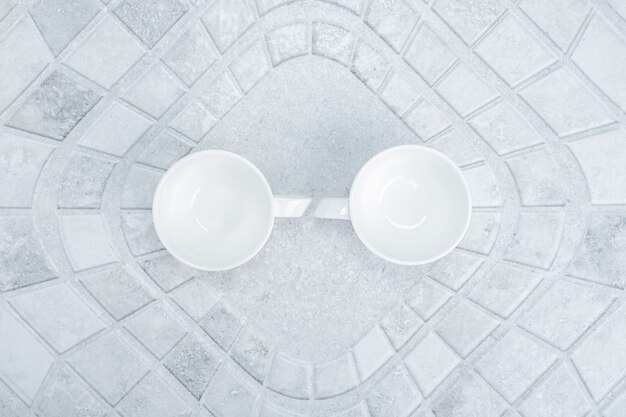Is Your Refrigerator Leaking Water? Here's What You Need to Know
In the world of household appliances, few are as essential as the refrigerator. Yet, even this reliable workhorse can encounter issues, like leaking water. Spotting a puddle under your fridge can be concerning, but don't worry—it's often a solvable problem. Let's dive into why refrigerators might leak water, how to address it, and what steps you can take to prevent it from happening again.
Understanding the Basics: Why Do Refrigerators Leak Water?
Refrigerators can occasionally leak water for various reasons. These leaks, while often fixable, can lead to bigger problems such as water damage, mold, and increased energy bills if left unchecked. Understanding the common causes of refrigerator leaks can help in diagnosing and solving the problem efficiently.
1. Blocked Defrost Drain
One of the most common reasons for a leaking refrigerator is a blocked defrost drain. Modern fridges defrost automatically, and the water produced is supposed to drain through this small tube. If the tube becomes clogged with debris, it can lead to water buildup, eventually spilling into your kitchen.
2. Water Filter Issues
If your refrigerator includes a water dispenser or ice maker, an improperly fitted or outdated water filter might be to blame for leaks. Filters that aren’t securely installed can create gaps where water can escape.
3. Faulty Drain Pan
The drain pan beneath your fridge collects excess moisture from the defrost system. Although it's designed to evaporate water over time, a cracked or out-of-place drain pan can cause spills onto your floor.
4. Door Seal Problems
A damaged or worn-out door seal (gasket) can allow warm air to seep in, causing condensation inside the refrigerator. This moisture can contribute to water leaks internally and externally.
5. High Humidity Conditions
In regions with high humidity, refrigerators sometimes accumulate more frost, resulting in excess defrost water. This can overwhelm the defrost system, leading to leaks.
6. Improper Level
Believe it or not, a refrigerator that isn’t level can also leak. If your appliance is tilting, it might affect the efficacy of the internal drainage system, causing water spillage.
Diagnosing the Leak: A Step-by-Step Guide
Before getting your hands dirty, take a moment to safely unplug your refrigerator from power and follow these steps to diagnose the issue:
Inspect the Drain Pan: Pull out the drain pan (usually located at the bottom) and check for cracks or oversaturation. Replace if necessary.
Check the Defrost Drain: Locate the defrost drain and use a small funnel with warm water to clear any blockages. Gently use a pipe cleaner if the clog persists.
Examine the Water Filter: If applicable, verify that the water filter is correctly installed and is up-to-date. Replace if needed to ensure tight sealing.
Assess the Door Seal: Run your fingers along the door gasket, checking for cracks, tears, or areas where the door doesn’t seal tightly.
Test the Fridge Level: Use a bubble level tool to ensure your refrigerator sits evenly. Adjust the leveling legs or place a sturdy shim under the unit if necessary.
Effective Solutions and Preventive Measures
Once you’ve pinpointed the cause, applying effective solutions becomes much simpler. Here are steps you can take to fix and prevent future leaks:
1. Cleaning and Maintaining the Defrost Drain
Regular maintenance of your defrost drain can keep clogs at bay. Clean it every few months with a mixture of warm water and baking soda to discourage blockage buildup.
2. Replacing the Water Filter
Fit a new water filter every six months or according to manufacturer recommendations. Ensuring they are in place correctly will prevent drips and leaks from around the dispenser or ice maker.
3. Fixing or Replacing the Drain Pan
Inspect the drain pan periodically. Replace or repair with a waterproof sealant if you notice any damage that might cause leaks.
4. Repairing Door Seals
If door seals exhibit significant wear, look for appropriate replacement seals and follow the manufacturer's installation guidelines. Regular cleaning with mild detergent can extend the lifespan of existing gaskets.
5. Addressing Humidity Issues
While you can’t control the weather, dehumidifiers or adjusted fridge settings can help manage excess moisture. Consider using these during particularly humid spells.
6. Ensuring Proper Installation
When installing a new refrigerator, take special care to level it properly. For older units, check and adjust the level regularly, especially if your home shifts or settles.
A Quick Summary for Easy Reference
Here's a handy checklist with solutions and prevention tips 🧠📋:
- Blocked Defrost Drain:
- 👨🔧 Regular cleaning to avoid clogs.
- Water Filter Issues:
- 🚰 Replace filters every six months for optimal performance.
- Faulty Drain Pan:
- 🔧 Repair or replace damaged pans.
- Door Seal Problems:
- 🧹 Clean regularly, replace if worn.
- High Humidity Conditions:
- 🌧️ Use dehumidifiers if necessary.
- Improper Level:
- 📏 Use a level tool for proper alignment.
Final Thoughts: Ensuring a Leak-Free Fridge
While a refrigerator leak can seem daunting, understanding and addressing the root cause is often straightforward. With the right maintenance routines and a keen eye for detail, you can prevent leaks and ensure your appliance runs efficiently for years to come. Regular checks on common trouble spots, like the defrost drain and door seals, paired with proper filter maintenance and appliance leveling, will keep unwanted water at bay. A little bit of proactive care goes a long way in maintaining the optimal performance of your refrigerator. Feel confident knowing that you have the tools and knowledge to handle this common household issue effectively.
Remember, if the problem persists beyond these steps or you feel uncertain about tackling the repairs, consulting with a professional technician might be your best course of action. Your peace of mind and the seamless functioning of your kitchen are worth the investment.
